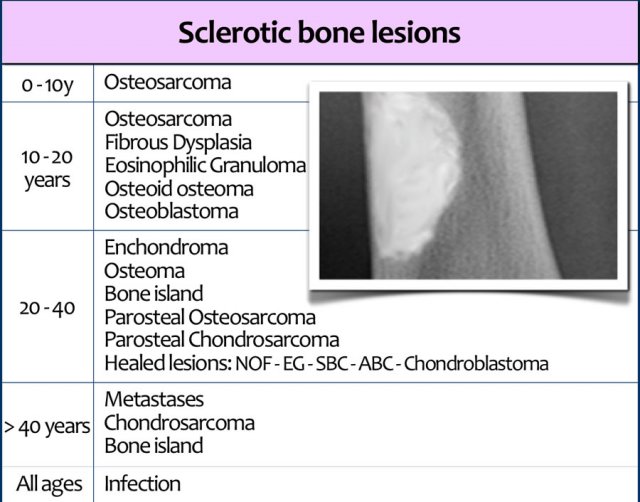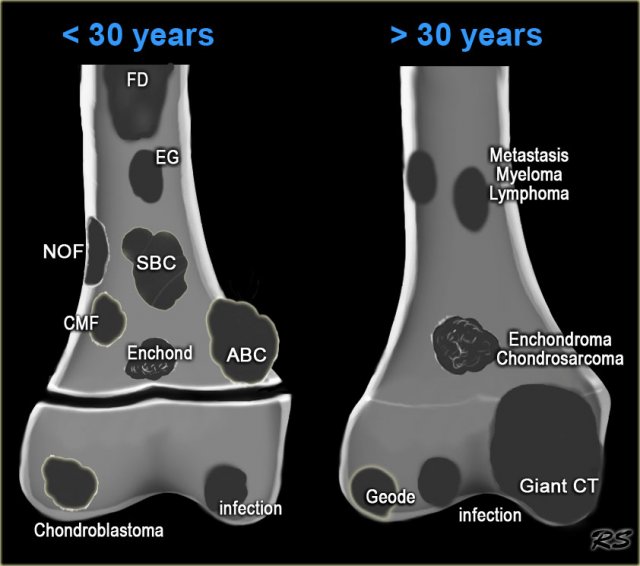What Term Is Used to Describe Tumorlike Lesions
Plaques are palpable lesions 10 mm in diameter that are elevated or depressed compared to the skin surface. Lesion is a term used by physicians to describe virtually any physical abnormality.

Imaging Of Upper Limb Tumors And Tumorlike Pathology Radiologic Clinics
Because this term is nonspecific and easily misused it should be avoided.

. Bone lesion primary bone tumor bone tumour. A nodule or mass-like lesion in the lung that demonstrates abnormal activity on 18 F-FDG PETCT tends to be interpreted as an ACTH-secreting tumor and might be surgically resected. Introduction The term eponym originates from the Greek word eponymous which means named after An eponym was a simple way to describe tumors and tumorlike lesions that initially were not well understood.
It is important for radiologists to recognize the indications and appropriate imaging studies for various jaw lesions. In common radiologic and orthopedic parlance however it is the equivalent of the term neoplasm. It gets started as a kid and it is also called atopic dermatitis.
Usually you first develop it in adolescence. Who were the people and what are the lesions. When a peptic ulcer occur in the stomach.
Tumors and tumorlike lesions of the globe and optic nerve in children represent a different histologic spectrum than in adults. Pathologists use this term to describe some precancerous lesions in the pancreas intraductal papillary mucinous neoplasm. An awareness of them is important since they can be confused with bone tumors and receive excessive or inadequate treatment.
What is tumor like lesion. Hwang S Schneider R. What Diseases Cause Lesions On The Skin.
The most common clinical. A malignant tumor is commonly known as cancer. Different terms have been used to describe this lesion including fibrolipomatous hamartoma fibrolipoma lipofibroma and intraneural lipoma.
A bone lesion is considered a bone tumor if the abnormal area has cells that divide and multiply at higher-than-normal rates to create a mass in the bone. By definition tumor and tumor like lesions are lesions that look alike on ultrasound US computer tomography CT or magnetic resonance imaging MRI studies. Although the indi-viduals for whom the diseases were named were not always.
It may refer to a tumor a tumor-like condition or a finding that is not yet diagnosed. The term is derived from the Greek epioulon meaning on the gum In the human literature the term is used to describe any focal growth of the gingiva. A malignant tumor is one that can spread metastasize to other areas in the body.
The term tumor generally means mass. An abnormal new growth of tissue that grows more rapidly than normal cells and will continue to grow if not treated. No lesions dont always mean cancer.
The word lesion is a Latin word for injury It means almost everything that is uncommon in medical parlance. Mixed hemorrhoids can indicate lesions that originate at the dentate line or the term can be used to describe the presence of both. Findings compatible with a tumor like lesion however neoplasm cannot be ruled out.
Do lesions always mean cancer. They are benign proliferation of surfce epithelium associated with the human papilloma virus. However in clinical practice the resected pulmonary tumor occasionally turns out to be an infectious lesion most often caused by fungus.
Retinoblastoma is a tumor of infancy and the most common intraocular tumor in children. Typically tumor like lesions are reported as. Tumors and Tumor-like Lesions SYNOVIAL OSTEOCHONDROMATOSIS Synovial osteochondromatosis also known as synovial chondromatosis or synovial chondrometaplasia is an uncommon benign disorder marked by the metaplastic proliferation of multiple cartilaginous nodules in the synovial membrane of the joints bursae or tendon sheaths.
The purpose of this article is to describe the indications and appropriate imaging studies for various jaw tumors and tumorlike lesions the imaging findings the differential diagnosis and appropriate treatment options. The imaging appearances of these lesions reflect their pathologic features. The term flat lesion may be used to describe a patch or Macula.
What term is used to describe tumor-like lesions in the anal area caused by dilated veins. There are heritable and nonheritable forms. Of musculoskeletal tumors and tumorlike lesions.
Describing a bone lesion is an essential skill for the radiologist used to form an accurate differential diagnosis for neoplastic entities and occasionally non-neoplastic. Eponyms to refer to various tumors and tumorlike le-sions of the musculoskeletal system. - its serves to locate the tumor but not describe it.
195suppl 4S50S61 RECOMMENDED READING 1. Most lesions referred to as epulis are inflammatory rather than neoplastic. The term tumor does not indicate whether an abnormal growth is malignant cancerous or benign as both benign and malignant lesions can form tumors in the bone.
Eponyms of tumors and tumor-like lesions in the musculoskeletal system. It is a generic term used clinically to designate all discrete tumors and tumorlike masses of the gingiva. The term maculopapular is often loosely and improperly used to describe many red rashes.
To understand the terminology applied to tumors and tumor-like lesions of the bone it is important to redefine certain terms pertinent to lesions and their location in the bone. Although it is accurate that the word lesion would be used by doctors to describe anything that will later turn out to be cancer. Epulis is a nonspecific clinical term used to describe tumors and tumorlike masses of the gingiva.
Tumor-like bone lesions are non-neoplastic lesions that simulate tumors. 1 In 1969 Johnson and Bonfiglio 2 introduced the term lipofibromatous hamartoma based on histological findings but the etiology of this lesion remains unknown. Benign bone tumors and tumor-like bone lesions occur most frequently between the ages of five to 25 years and in the areas of greatest bone growth with.
A term used to describe certain tumors which grow in finger-like projections.

Pin By Amine Rayli On Pa Medical Ultrasound Nuclear Medicine Medical Anatomy


Comments
Post a Comment